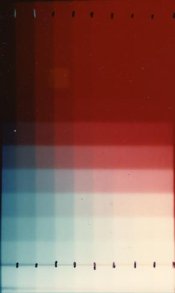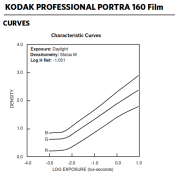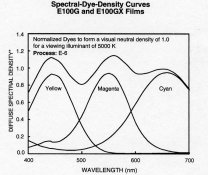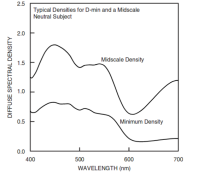Background, I am trying to create some scanning software for negative inversion.
I am interested to hear from anyone involved in the design of color negative emulsions, or similar technical background, that could explain what the reason is for the different contrast index or gamma between each color layer, of a color negative emulsion?
Tracing the physical process through to exposure onto color paper, it is clear to me at least that this bias is not removed by the corresponding individual characteristic curves of color RA-4 paper.
I am interested to hear from anyone involved in the design of color negative emulsions, or similar technical background, that could explain what the reason is for the different contrast index or gamma between each color layer, of a color negative emulsion?
Tracing the physical process through to exposure onto color paper, it is clear to me at least that this bias is not removed by the corresponding individual characteristic curves of color RA-4 paper.


 but I am trying to get a better picture of what really goes on for a number of reasons. There isn't really much that I have found in the public domain, in the glory days of film, I could see how it made sense for Kodak et all to keep it proprietary, but not so in the digital age.
but I am trying to get a better picture of what really goes on for a number of reasons. There isn't really much that I have found in the public domain, in the glory days of film, I could see how it made sense for Kodak et all to keep it proprietary, but not so in the digital age.




 When I wrote it, I could see how it could turn out a number of different ways, as I don't have all the pieces of the puzzle.
When I wrote it, I could see how it could turn out a number of different ways, as I don't have all the pieces of the puzzle.
